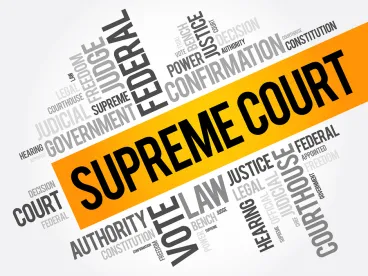Today, the U.S. Supreme Court issued a landmark decision in the state and local tax world which overturns precedent going back to 1992. The decision, South Dakota v. Wayfair, No.17-494 (June 21, 2018), means that state and local taxing jurisdictions throughout the country can now compel online sellers to collect sales tax for sales made to customers in that particular state or local jurisdiction, even if the seller does not have a presence there.
The Court clarified that nexus is required to compel sales tax collection, but the required level of nexus will no longer be based on a physical presence test as articulated in Quill Corp. v. North Dakota, 504 U.S. 298 (1992). Quill stood for the proposition that a seller cannot be compelled to collect a state’s sales tax absent having physical presence in the taxing state.
Despite the holding of Quill, the digital economy and the online marketplace drastically altered the way business and sales are transacted and therefore, states felt the need to change their policies as well to keep up with economic and commercial trends. As a result, states started getting creative with how they found physical presence. This culminated in some states adopting rules which would impose nexus on an out-of-state seller for merely earning above a certain “bright-line” amount of sales from the taxing state. More than a half dozen states have adopted these “bright line” receipts nexus rules for sales tax with more to come.
The Wayfair case concerned South Dakota’s bright-line nexus rule for sales tax. The Supreme Court’s majority opinion has overturned and eliminated Quill’sphysical presence test for nexus. The majority based the decision on a number of factors including the changing economy, unfair competitive advantages and market distortions caused by the physical presence rule, and the need for fashioning a rule that is “appropriate to the twenty-first century” and would allow states to collect tax revenue from businesses that have availed themselves of the state’s marketplace regardless of any physical presence (or lack thereof).
The majority also countered any notion of compliance burdens that a business may face with several state’s tax rules by noting that software is being developed to address this issue and that such software or programs may be more readily available after this decision and potentially supplied by state revenue departments. The majority also pointed to the uniform rules followed by the Streamlines Sales Tax Agreements states, in addition to Congress’ ability to fix any compliance burdens that may arise.
The major take-away from the case is that states can now force out of state sellers to collect sales tax if those sellers conduct above a de-minimis level of sales in the state, regardless of whether there is a physical presence in the taxing state. Additionally, the Court’s decision may have broader implications beyond sales tax which could open the door for more states to adopt even more expansive economic nexus and bright-line receipts nexus rules for income and other business activity taxes.



 />i
/>i

